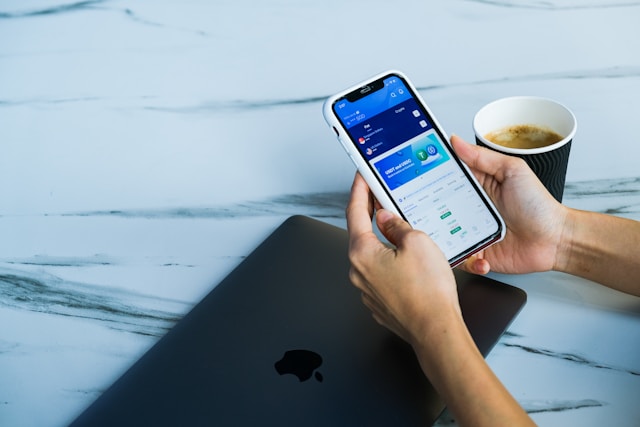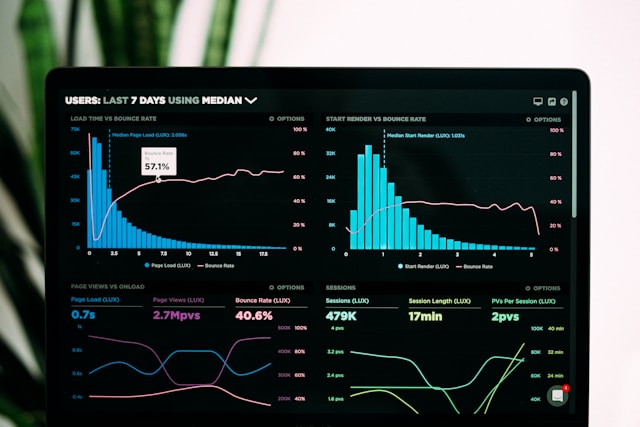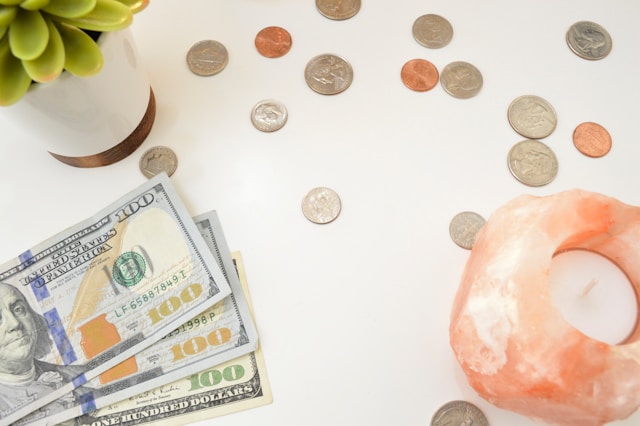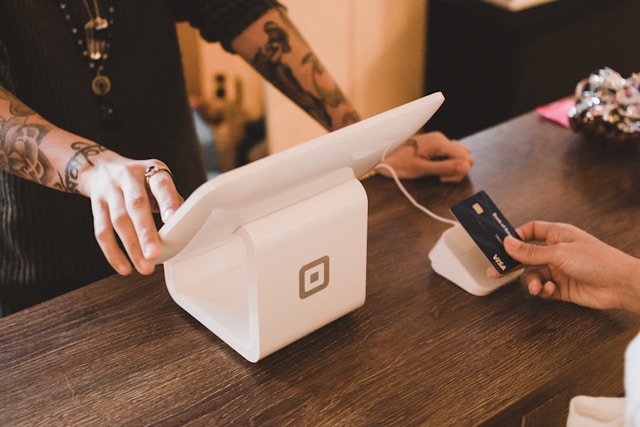What are the top fintech apps to manage your money in 2026. Discover how Cash App, Revolut, Monzo, N26, Acorns, and more make finance simple, smart, and secure.
Introduction
Fintech apps are software applications that combine finance and technology to make money management an easier, less expensive, and more accessible feat. Fintech apps comprise a myriad of services, such as peer-to-peer payments, mobile banking, budgeting and investment, crypto trading, credit building, buy-now-pay-later, and embedded finance in nonbank platforms.
In the last decade, these apps took most routine banking tasks outside of the branch network and into your pocket, already AI-driven, and will be even more personalized and completely integrated with other services in 2026.
What are Fintech apps?
FinTech applications are mobile or web apps that employ technology to deliver financial services such as banking, payment services, investing, saving, and credit. They simplify money management and make it more affordable and more accessible. These applications provide the user with the opportunity to control finances, send money, invest, and make savings on a smartphone.

Key features of fintech apps
Real-time notifications and alerts
Monitor money in real-time with spending notices, balance notices, payment confirmation requests, and prevent fraud through real-time monitoring and tracking of financial transactions.
Account management
Check balances, review the history of transactions, and edit accounts directly in the application, and keep all your financial orders tidy without visiting the bank and completing paperwork.
Payments and transfers
Move/ receive funds locally or internationally in real-time, at reduced costs and at faster rates compared to other banks and wire services.
Personalized dashboards
Based on customizable dashboards, users receive an overview of their spending, savings, and investments, which gives them actionable information on their financial health of the user at a single glance.
Security
The advanced encryption, fraud detection, and risk monitoring ensure secure transactions. These very systems also ensure that data sensitive to finance is not exposed to unauthorized access.
User authentication and security
Strong protection layers such as two-factor authentication, biometrics, and device verification will further denote that the user’s identity accurately matches the account at the time of the transaction or login attempt.
Expense tracking
Automatically label purchases, monitor recurring payments, and view spending patterns, which helps users to discover habits, limit wastage, and adhere to budgets successfully.
Financial insights
Data analysis reveals trends in spending profits now and in the future while giving personalized recommendations, letting users know how they can make the right financial choices to increase their chances of being better off later financially.
Payment options
An automatic and measurable means will support debit cards, credit cards, digital wallets, QR codes, and cryptocurrencies, providing flexibility in ways to secure payment transactions.
Top Fintech Apps to Manage Your Money in 2026
1. Cash App
Cash App enables its users to send and receive money within seconds, invest in stocks or Bitcoins, and check their spending. It’s easy to understand, very simple, and so much cheaper for everyday money transactions.
2. Revolut
Revolut provides multi-currency accounts, international money transfers, crypto trading, and budgeting solutions. It can enable travelers, freelancers, and ordinary users to use money conveniently and safely without any complications, and with built-in saving mechanisms and good exchange rates.
3. Monzo
Monzo is an online bank that is characterized by intelligent budgets, immediate payments, and split bills. Its user-friendly application and free international spending allow the use of personal finances to become more transparent and efficient.
4. N26
N26 offers 100 percent digital banking, real-time expense overview, spending analytics, and worldwide free payments. Its minimalist design, in-built security, ty and savings features appeal to those users who want ease of use and control over their money.
5. Acorns
Acorns is a tool used to enable users to become wealthy by investing change in various portfolios automatically. It also makes investment affordable to novices and ordinary savers with low fees, educational content, and retirement accounts.
6. MoneyLion
MoneyLion is a banking, investment, credit-building, and cash advance platform. Its financial monitoring system and rewards system promote healthier financial practices and provide affordable solutions to short-term requirements.
7. Stash
Stash lets its users invest in fractions of stocks, ETFs, and retirement plans and learn the basics of finance. It also offers banking facilities, individualized advice, and automatic savings towards long-term development.
8. Coinbase
Coinbase is a prominent cryptocurrency exchange to purchase, sell, and store cryptocurrencies. The Theeasy-to-usee app appeals to both beginners and seasoned traders and provides security, recurring purchases, and educational features about crypto investing.
9. Earnin
Earnin provides users with access to a part of their paycheck before payday without any fee. It connects hours worked, which allows individuals to meet immediate needs without paying for payday loans with high rates of interest.
10. SoFi
SoFi provides mortgage, student loan refinance, personal loans, investing, and banking. It also helps its users to build wealth, deal with debt, and achieve a financial objective with career coaching and member benefits.
Why Fintech Apps Matter in 2026
In 2026, fintech apps will offer individuals smarter, more flexible, and quicker money management. They provide investing, saving, budgeting, and credit facilities with AI, automation, and an easy-to-design interface. These applications save time and money, and assist individuals in becoming rich by fulfilling various monetary demands.
How fintech apps work
Most fintech apps combine three elements:
- A user interface, either mobile or web.
- Back-end services and APIs that integrate with banks, card networks, and data providers are cloud-based.
- Secure and compliance technology such as two-factor authentication, identity verification, and controlled custody of deposits or crypto.
The apps earn their revenues through interchange fees, paid subscriptions, lending charges, advisory fees, and optional premiums. When the ecosystem reaches maturity, many also become collaborators of larger banks or acquire their own banking licence to allow more traditional offerings within the app.
How to pick the right fintech app for you
- Define the primary use. Payments, budgeting, investing, credit building, or all-in-one?
- Check deposit protection. In case the app keeps fiat deposits, make sure that funds are FDIC-insured or equivalent.
- Fee structure. See past headline offers to subscriptions, transaction fees, and trading spreads.
- Security and privacy. Use applications with multi-factor authentication, device controls, as well as transparent data policies.
- Customer service and conflict resolution. Quality support is important, and fast money is important.

Practical tips for using fintech apps safely
- Use good and distinct passwords and use two-factor authentication.
- Store long-term emergency funds in accounts that are well-insured in terms of deposits.
- To invest, keep retirement and emergency money, and fun money speculative accounts separate.
- Look at crypto custody terminology. Not every crypto balance can be insured or be bank deposit-like.
FAQS
Can fintech apps help build credit?
Yes. Such applications as MoneyLion and Experian Boost (and many others) offer credit-building loans or the option to report bill payments to raise credit scores.
Are fintech apps free to use?
The majority of the applications are free to download, yet a few of them require subscription fees, transaction fees, or premium services. Look at the pricing terms and then sign up.
Conclusion
Fintech apps have revolutionized money management because of the speed, security, and accessibility they provide as one platform. They will be on the frontline in the development of innovation in 2026, providing smarter insights, a wider range of tools, and global convenience, enabling users to save, invest, and spend with more certainty than they have ever been able to do with traditional banking.





